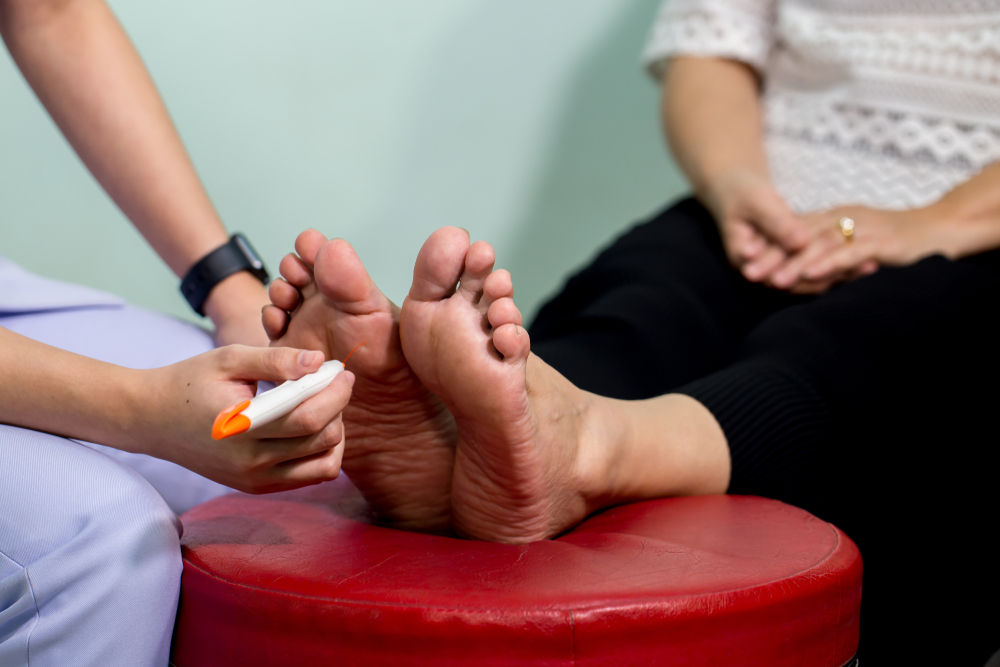Is Scaffold (New bandage Treatment) Instrumental in transforming diabetic foot?

A scaffold is a novel bandage solution developed by Queen's University Belfast researchers to repair diabetic foot ulcers that is affordable and effective for patients. The scaffolds, created by 3D bioprinting, discharge antibiotics over four weeks to cure the wound.
A devastating consequence of diabetes, diabetic foot ulcers (DFU) afflict about 25% of diabetic people. Over 50% of cases have been infected before being discovered, and over 70% end with lower limb amputation.
To effectively treat DFU, a sophisticated treatment plan including many therapy modalities is necessary. As a result, treating DFU entails a considerable clinical and financial burden. Due to the failure of these treatments, lower limb amputation is usually necessary
Debridement:
Debridement is one method of ulcer treatment. This procedure removes dead skin and tissue. Never attempt to do this on your own. This must be done by a professional, like a podiatrist, to ensure that the debridement is performed properly and does not aggravate the injury.
- Cleaning and disinfection are performed on the skin around the wound.
- With the help of a metal probe, the wound is examined to determine its depth and the presence of foreign objects or materials inside the ulcer.
- After removing the dead tissue, the healthcare practitioner cleans the ulcer.
- Then, the wound could appear deeper and larger. The ulcer ought to be pink or red. Pale or purple/black wounds have a lower chance of healing.
Other techniques the provider may employ to remove contaminated or dead tissue include:
- Place a foot in a whirlpool.
- Use a catheter (tube) and syringe to remove dead tissue
- Use treatments that are moist to dry the region.
- Apply enzymes, which are specialized compounds, to your ulcer. These eliminate the wound's dead tissue.
- Hyperbaric oxygen treatment prescription
New methods:
This new study presented at Queens University, Belfast, shows results that substantially affect patients' life quality and reduce the expense and clinical burden of treating DFU.
Research on drug-loaded scaffolds for the treatment of DFU has recently been conducted. The scaffolding structure is a cutting-edge vehicle for introducing cells and medications that improve wound healing.
Professor Dimitrios Lamprou, the corresponding author and Professor of Biofabrication and Advanced Manufacturing at Queen's School of Pharmacy, explains: "These scaffolds are like windows that allow physicians to observe the healing continuously. By doing this, the need to remove them frequently is avoided, which can cause an infection and slow the healing process.”
"The 'glass,' comprised of collagen and sodium alginate, may include a growth factor that encourages cell development. The 'frame' also contains an antibiotic that helps to 'kill' the bacterial infection. The scaffolding has two molecular levels, each crucial to the healing of the lesion.
Caring and dressing for the wounds:
As directed by your physician, take care of your wound. Other directives might be:
- Maintain good control of your blood sugar levels. Your body can fight infections and heal more quickly as a result.
- Bandage the ulcer and keep it clean.
- Utilizing a bandage or wound dressing, clean the wound every day.
- Reduce any pressure being placed on the healing ulcer.
- Unless your provider says it is okay, never walk barefoot.
- Additionally crucial is managing excessive cholesterol, good blood pressure, and quitting smoking.
- Your healthcare professional could treat your ulcer with a variety of dressings.
Regular exams with your health care provider are the best way to determine if you are at higher risk of foot ulcers due to diabetes. Your provider should check your sensation with a tool called a monofilament. Your foot pulses will also be checked.
Call your provider if you have any of these signs and symptoms of infection:
- Redness, increased warmth, or swelling around the wound
- Extra drainage
- Pus
- Odour
- Fever or chills
- Increased pain
- Increased firmness around the wound
Also, call if your foot ulcer is very white, blue, or black.






